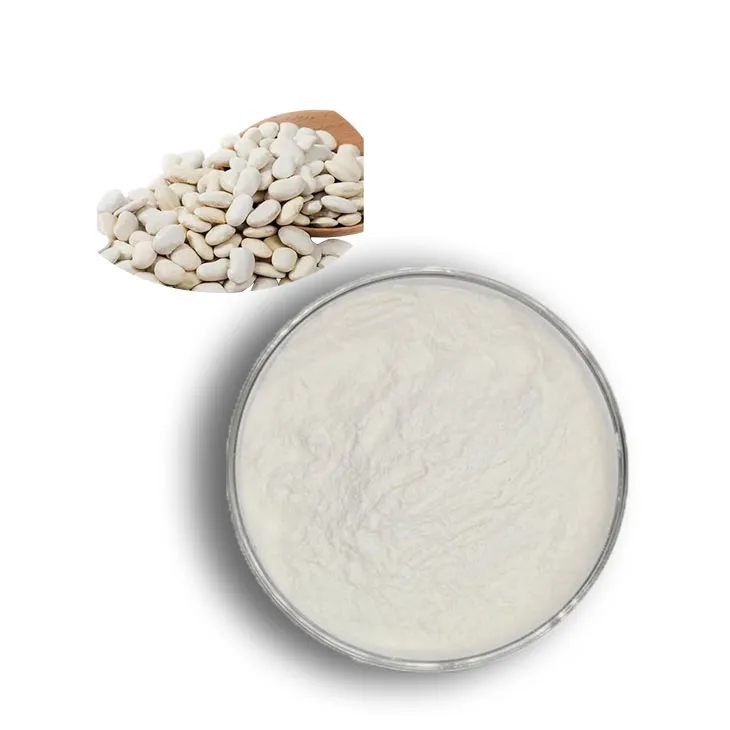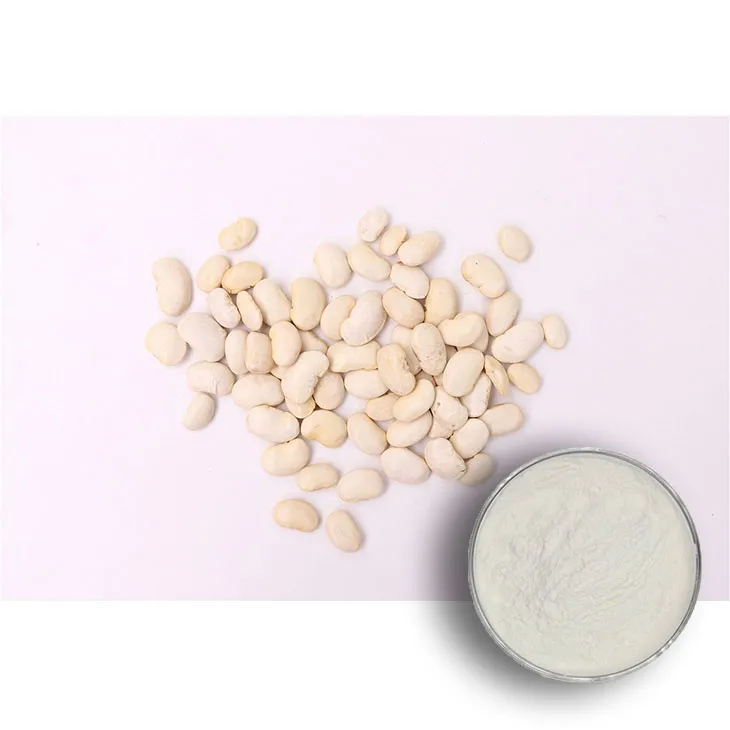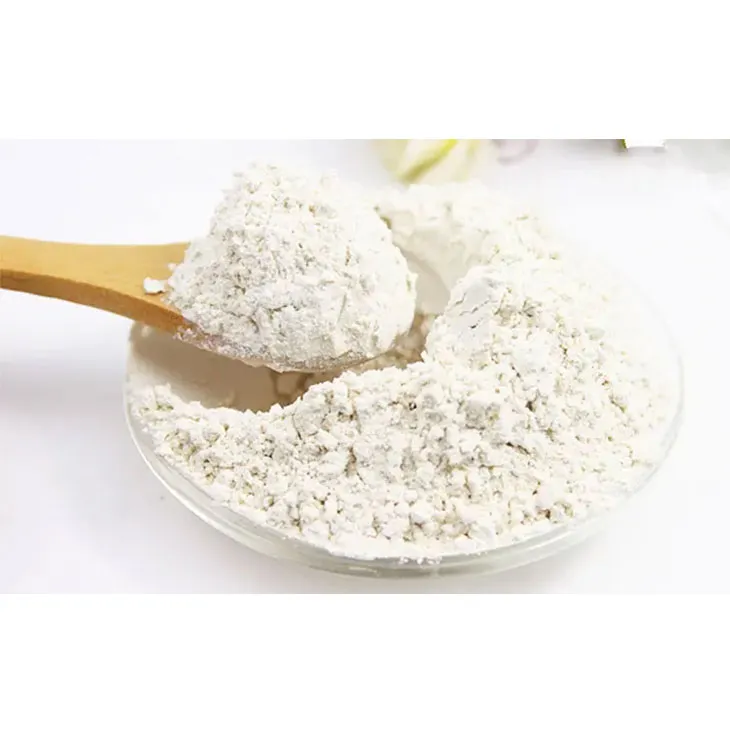- 0086-571-85302990
- sales@greenskybio.com
The flavor of mature kidney beans and natural kidney bean extracts.
2024-11-13

1. Introduction
Mature kidney beans are a common ingredient in many cuisines around the world. Their unique flavor adds depth and character to a variety of dishes. On the other hand, natural Kidney Bean Extracts are becoming increasingly popular in the food and supplement industries. These extracts are highly concentrated forms of the beneficial components found in kidney beans. Understanding the differences and similarities between the flavor of mature kidney beans and their extracts, as well as their chemical compositions, is crucial for various aspects, including health, nutrition, and product development.

2. The flavor of mature kidney beans
2.1. Taste profile
Mature kidney beans have a distinctive taste that can be described as earthy, slightly nutty, and with a hint of sweetness. The earthy flavor is characteristic of many legumes and is likely due to the presence of certain compounds such as phenolics. The nutty undertone gives the beans a rich and satisfying quality, which makes them a great addition to savory dishes. The touch of sweetness is relatively mild but helps to balance out the other flavors.
2.2. Aroma
The aroma of mature kidney beans is an important part of their flavor profile. When cooked, they emit a warm, inviting smell that is a combination of the earthy and nutty notes, along with a faint vegetal aroma. This aroma is not only appealing but also signals the presence of various volatile compounds. Some of these volatile compounds are responsible for the unique scent of kidney beans and contribute to the overall sensory experience when consuming them.
2.3. Factors influencing the flavor
- Growing conditions: The soil type, climate, and altitude where the kidney beans are grown can have a significant impact on their flavor. For example, beans grown in well - drained, fertile soil may have a more pronounced flavor compared to those grown in less favorable conditions.
- Cooking methods: Different cooking methods can alter the flavor of kidney beans. Boiling, for instance, may result in a milder flavor compared to roasting, which can intensify the nutty and earthy flavors.
- Storage conditions: Improper storage can lead to off - flavors in kidney beans. If they are exposed to moisture or high temperatures for extended periods, they may develop a rancid or musty smell, which negatively affects their flavor.

3. Chemical composition of mature kidney beans
3.1. Macronutrients
Kidney beans are rich in macronutrients. They are a good source of carbohydrates, mainly in the form of starch. The starch content gives the beans their characteristic texture and also contributes to their energy - providing properties. They also contain a moderate amount of protein, which is essential for building and repairing tissues in the body. Additionally, kidney beans have a small amount of fat, most of which is unsaturated fat.
3.2. Micronutrients
- Vitamins: Kidney beans are a source of various vitamins, such as vitamin K, which is important for blood clotting, and folate, which is crucial for cell division and the prevention of neural tube defects during pregnancy.
- Minerals: They are rich in minerals like iron, which is necessary for oxygen transport in the body, and potassium, which plays a role in maintaining proper heart function and fluid balance.
3.3. Bioactive compounds
- Phenolic compounds: These are antioxidants that help protect the body against oxidative stress. They also contribute to the earthy flavor of kidney beans.
- Phytic acid: While it can bind to minerals and reduce their absorption, phytic acid also has antioxidant properties.
- Lectins: Kidney beans contain lectins, which can be toxic if not properly cooked. However, proper cooking deactivates lectins, and they may also have some potential health benefits, such as modulating the immune system.

4. Natural Kidney Bean Extracts
4.1. Production methods
Natural Kidney Bean Extracts are typically produced through extraction processes. These processes can involve using solvents such as ethanol or water to extract the desired components from the kidney beans. The extracted material is then purified and concentrated to obtain the final extract. Different extraction methods can yield extracts with varying compositions and properties.
4.2. Flavor characteristics
- The flavor of natural kidney bean extracts is more concentrated compared to that of whole mature kidney beans. It has a more intense earthy and nutty flavor, with less of the mild sweetness present in the whole beans.
- Since the extraction process may remove some of the volatile compounds responsible for the aroma of whole beans, the aroma of the extract may be different. It may have a more pungent, concentrated smell.
4.3. Chemical composition
- Natural kidney bean extracts are rich in the bioactive compounds found in kidney beans. For example, they may have a higher concentration of phenolic compounds compared to whole beans, which makes them potentially more effective as antioxidants.
- They also contain other beneficial components such as proteins and certain minerals, but in a more concentrated form.

5. Comparison of the flavor of mature kidney beans and their extracts
5.1. Taste comparison
The taste of mature kidney beans is more complex and balanced, with the different flavor components - earthy, nutty, and sweet - interacting in a harmonious way. In contrast, the taste of the extract is more one - dimensional, with a stronger emphasis on the earthy and nutty flavors. The mild sweetness that is present in the whole beans is almost negligible in the extract.
5.2. Aroma comparison
The aroma of mature kidney beans is more nuanced, with a combination of vegetal, earthy, and nutty notes. The aroma of the extract, while still having an earthy and nutty character, is less complex and more intense. It lacks the freshness and subtlety of the aroma of whole beans.
5.3. Overall sensory experience
When consuming mature kidney beans, the sensory experience is a combination of the taste, aroma, and texture. The beans have a firm texture that adds to the overall eating experience. In the case of the extract, the focus is mainly on the concentrated flavor and aroma, and there is no texture component. This makes the sensory experience of consuming the extract quite different from that of eating the whole beans.6. Health implications
6.1. Benefits of mature kidney beans
- The fiber content in mature kidney beans can aid in digestion and help prevent constipation. It also promotes a feeling of fullness, which can be beneficial for weight management.
- The presence of vitamins and minerals, such as iron and folate, helps support various bodily functions, including the formation of red blood cells and proper fetal development during pregnancy.
- The bioactive compounds, like phenolic antioxidants, can protect the body against chronic diseases such as heart disease and cancer by reducing oxidative stress.
6.2. Benefits of kidney bean extracts
- Due to their higher concentration of bioactive compounds, kidney bean extracts may have a more potent antioxidant effect. This can help in reducing inflammation in the body and protecting cells from damage.
- They may also be beneficial for people with specific health conditions, such as those at risk of developing diabetes. Some studies suggest that certain components in kidney bean extracts can help regulate blood sugar levels.
6.3. Potential risks
- As mentioned earlier, if kidney beans are not properly cooked, the lectins present in them can cause adverse effects such as nausea, vomiting, and diarrhea. This also applies to products containing kidney bean extracts if the extraction process does not ensure the inactivation of lectins.
- Some people may be allergic to kidney beans or components in the extracts, which can lead to allergic reactions ranging from mild skin rashes to more severe anaphylactic shock.
7. Nutrition implications
7.1. Macronutrient differences
While both mature kidney beans and their extracts contain carbohydrates, proteins, and fats, the proportions may vary. The extract may have a higher concentration of proteins and bioactive compounds relative to carbohydrates compared to whole beans. This can be important for individuals who are looking for a more concentrated source of specific nutrients, such as those following a high - protein diet or those interested in the antioxidant benefits of kidney beans.
7.2. Micronutrient differences
The extraction process may affect the availability of micronutrients. For example, some vitamins and minerals may be lost during the extraction and purification steps. However, in some cases, the concentration of certain micronutrients may be increased in the extract if they are co - extracted with the bioactive compounds. This requires careful consideration when evaluating the nutritional value of kidney bean extracts compared to whole beans.8. Product development
8.1. Use of mature kidney beans in food products
- Mature kidney beans are widely used in traditional dishes such as chili con carne, bean salads, and casseroles. Their flavor and texture add variety and substance to these dishes.
- They can also be used in the development of new food products, such as vegetarian and vegan meat substitutes. Their high - protein content and unique flavor make them a suitable ingredient for creating products that mimic the taste and texture of meat.
8.2. Use of kidney bean extracts in food and supplement products
- In the food industry, kidney bean extracts can be used to enhance the flavor of products. Their concentrated earthy and nutty flavor can add depth to soups, sauces, and seasonings.
- In the supplement industry, kidney bean extracts are being explored for their potential health benefits. They can be formulated into capsules or tablets for easy consumption, targeting specific health concerns such as blood sugar regulation or antioxidant support.
9. Conclusion
The flavor of mature kidney beans and natural kidney bean extracts has both similarities and differences. While the whole beans offer a more complex and balanced flavor experience, the extracts are more concentrated in terms of flavor and bioactive compounds. Understanding their chemical compositions, health implications, and nutritional differences is essential for various applications, from cooking and product development to promoting health and well - being. As the demand for natural and healthy food ingredients continues to grow, both mature kidney beans and their extracts will likely play important roles in the food and supplement industries.
FAQ:
Question 1: What are the main flavor components in mature kidney beans?
The main flavor components in mature kidney beans include certain organic acids, aldehydes, and esters. These substances work together to give kidney beans their characteristic earthy, slightly nutty flavor. For example, some aldehydes contribute to the unique aroma, while organic acids can add a tangy note to the overall flavor profile.
Question 2: How is the flavor of natural kidney bean extracts different from that of mature kidney beans?
The flavor of natural kidney bean extracts is more concentrated compared to mature kidney beans. Kidney bean extracts are made by isolating the flavor - relevant compounds from the beans. This concentration process can intensify certain aspects of the flavor. While mature kidney beans have a more complex, whole - food flavor with a balance of different taste and aroma elements, the extract may have a more pronounced and pure flavor of specific components, which can be either an advantage or a disadvantage depending on the application in cooking or product development.
Question 3: What are the chemical compositions of mature kidney beans and how do they relate to the flavor?
Mature kidney beans contain proteins, carbohydrates, fats, vitamins, and minerals. In terms of flavor - related chemistry, they have phenolic compounds, alkaloids, and flavonoids. Phenolic compounds can contribute to the antioxidant properties as well as the flavor. Alkaloids may add a bitter note in some cases, and flavonoids can influence the color and flavor stability. The carbohydrates and fats also play a role in the texture and mouthfeel, which are aspects related to the overall flavor experience.
Question 4: Are there any health benefits associated with the flavor components in kidney beans?
Some of the flavor components in kidney beans are associated with health benefits. For instance, certain phenolic compounds that contribute to the flavor also have antioxidant properties, which can help in reducing oxidative stress in the body. Additionally, the unique combination of compounds in kidney beans may support digestive health. However, it's important to note that in some cases, improper preparation of kidney beans can lead to toxicity issues related to certain compounds like lectins, which are not directly related to the flavor but are important to consider in the context of overall consumption.
Question 5: How can natural kidney bean extracts be used in product development?
Natural kidney bean extracts can be used in product development in several ways. In the food industry, they can be added to seasonings, soups, and sauces to enhance the flavor with a concentrated kidney bean essence. In the cosmetic industry, the unique aroma of kidney bean extracts can be incorporated into products like perfumes or scented lotions for a natural and unique fragrance. In the pharmaceutical industry, the bioactive compounds associated with the flavor may be explored for potential use in developing drugs or nutraceuticals, taking advantage of both the flavor and the potential health - promoting properties.
Related literature
- Flavor Chemistry of Legumes: A Review"
- "The Nutritional and Chemical Composition of Kidney Beans: Implications for Health and Product Development"
- "Natural Extracts in Food Flavoring: The Case of Kidney Bean Extracts"
- ▶ Hesperidin
- ▶ citrus bioflavonoids
- ▶ plant extract
- ▶ lycopene
- ▶ Diosmin
- ▶ Grape seed extract
- ▶ Sea buckthorn Juice Powder
- ▶ Beetroot powder
- ▶ Hops Extract
- ▶ Artichoke Extract
- ▶ Reishi mushroom extract
- ▶ Astaxanthin
- ▶ Green Tea Extract
- ▶ Curcumin Extract
- ▶ Horse Chestnut Extract
- ▶ Other Problems
- ▶ Boswellia Serrata Extract
- ▶ Resveratrol Extract
- ▶ Marigold Extract
- ▶ Grape Leaf Extract
- ▶ blog3
- ▶ blog4
- ▶ blog5
-
Organic Tongkat Ali extract powder factory.
2024-11-13
-
How to make powder with ashwagandha extract.
2024-11-13
-
Rosehip extract manufacturers from China.
2024-11-13
-
The best cat's claw extract in nature.
2024-11-13
-
Chinese Dandelion Leaf Extract Suppliers.
2024-11-13
-
Grapefruit Seed Extract Powder
2024-11-13
-
Phyllanthus Emblica Extract
2024-11-13
-
Cocoa Extract
2024-11-13
-
Citrus Aurantii Extract
2024-11-13
-
Chasteberry Extract
2024-11-13
-
Angelica sinensis extract
2024-11-13
-
Honeysuckle Pollen
2024-11-13
-
Scutellaria Extract
2024-11-13
-
Kelp Extract Powder
2024-11-13
-
Sophora Japonica Flower Extract
2024-11-13





















